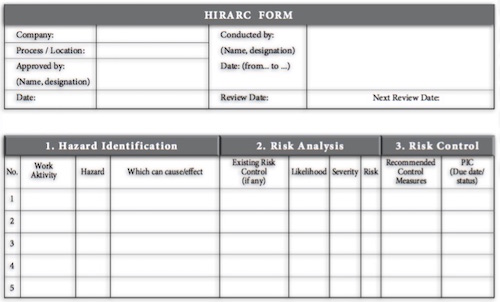Protective Gloves - If there is a danger shows that employees face potential injury to hands and arms that cannot be eliminated in the workplace, employers must ensure that employees wear appropriate protection.
Potential hazards include absorption by the skin of hazardous materials, chemical or thermal burns, electrical dangers, bruises, abrasions, cuts, punctures, fractures and truncated hand. Proper protective equipment includes gloves, fingerguards and armcoverings or elbow-length gloves.
Type of protective gloves
There are many types of gloves to protect the hands from a variety ofhazards. Nature of the hazard and the operation involvedwill determine the selection of gloves. It is essential that employees use gloves specifically designed for the hazards and tasks theyperform at work. The gloves are designed for one function may not protect against another function though it may seem to be suitable protective equipment.
Here are examples of some of the factors that can influence the selection of protective gloves for the workplace:
- Type of chemicals handled.
- Nature of contact (total immersion, splash, etc.).
- Duration of contact.
- Areas requiring protection (hand only, forearm, arm).
- Grip Requirements (dry, wet, oily).
- Thermal protection
- The size and comfort.
- Abrasion/resistance requirements.
The gloves are made from a variety of materials designed for many different types of hazards in the workplace. In general, gloves are divided into four groups:
- Gloves made of leather, canvas or metal mesh.Sturdy gloves made of leather, canvas or metal mesh provides protection against burns and cuts. Leather or canvas gloves also protect against sustained heat. Leather gloves protect the hands from the dangers of a shot, chip, rough objects, sparks and moderate heat.
- Fabric and coated fabric gloves. Fabric and coated fabric gloves are made of cotton or other fabric to provide varying degrees of protection. Fabric gloves protect against dirt, slivers, chafing and abrasions. It does not provide sufficient protection for use with rough, sharp material or heavy materials. Adding a layer of plastic will further strengthen cloth gloves. Coated fabric gloves are normally made from cotton flannel. By coating the unnapped side with plastic, fabric gloves modified to provide protection and offering slip-resistant characteristics. These gloves are used for handling tasks such as handling bricks, wire and containers of laboratory chemicals.
- Chemical and liquid resistant gloves. Chemical resistant gloves made with various types of rubber, whether from natural rubber, butyl, neoprene, nitrile and fluorocarbon. There was also made of various types of plastics such as polyvinyl chloride (PVC), polyvinyl alcohol and polyethylene. These materials can be blended or laminated for better performance. Generally, the thicker of glove material should provide the greater chemical resistance. However, thick gloves can affect the grip and agility, so it has a negative impact on safety.
- Insulating rubber gloves (for protection of electrical hazards).
Care of Protective Gloves
- Protective gloves should be inspected before each use to make sure it is not torn, punctured or made ineffective. Visual inspection will help detect leaks. A more comprehensive examination is to fill the gloves with water and tightly rolling the cuff towards the fingers will help reveal any pinhole leaks.
- Gloves that change colors may also indicate deficiencies caused by excessive use or damage as a result of chemical exposure.
- Reuse chemical resistant gloves should be evaluated carefully. The decision to reuse of gloves that have been exposed to chemicals should take into consideration the toxicity of these chemicals and factors such as duration of exposure, absorptive qualities, storage and temperature.

















